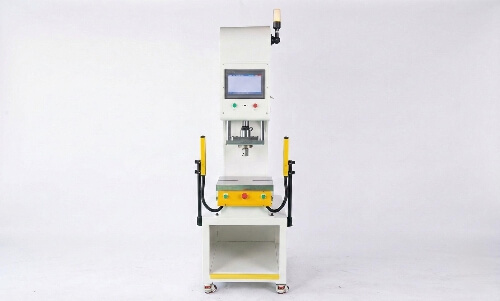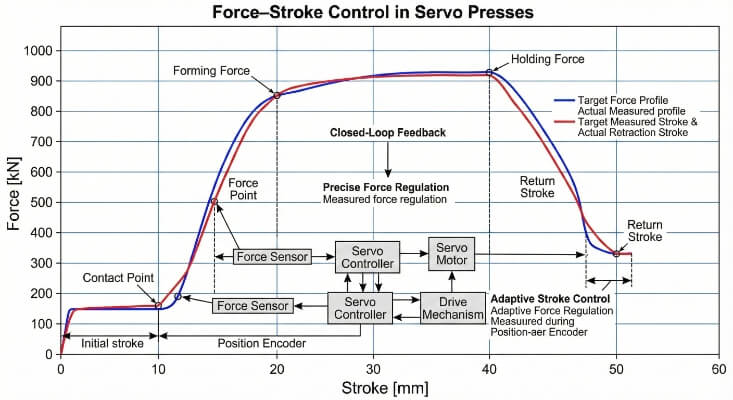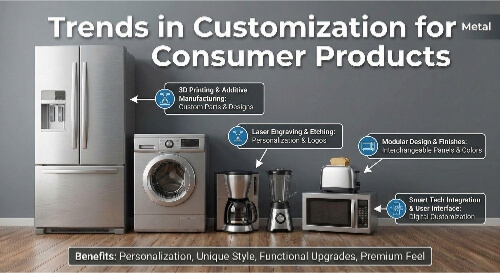Many manufacturers struggle with getting precise, cost-effective cuts on brass components. Time delays, quality issues, and high costs create headaches for production teams. Laser cutting technology transforms brass fabrication by offering speed, accuracy, and versatility that traditional methods can’t match.
Laser cutting uses focused light beams to cut brass with extreme precision. The process creates clean edges without burrs, needs no tooling changes, and works for both simple and complex designs. Modern laser systems cut brass sheets up to 0.250 inches thick while maintaining tight tolerances.
The advantages of brass laser cutting go beyond basic metal fabrication. This guide breaks down the key techniques, benefits, and real-world uses that make it valuable for manufacturing.
What is Brass Laser Cutting?
Brass laser cutting is a technique that uses a high-energy laser beam to cut brass materials. The laser beam melts or vaporizes the brass, while a combustion gas blows away the molten metal, ensuring a clean cut.
This method allows for precise and smooth edges, making it ideal for intricate designs and detailed work. The laser’s accuracy helps achieve tight tolerances and reduces material waste, providing both efficiency and high-quality results in various industries.
The Laser Cutting Process for Brass
A focused laser beam starts the cutting by heating a small spot on the brass surface. The heat quickly rises above 1,700°F (927°C), melting the metal. Pressurized nitrogen or oxygen gas blows away the molten brass, creating a clean cut.
How Laser Cutting Works?
Let’s break down how it works step by step:
- Preparation: First, the brass sheet is placed on the cutting bed. A CAD file is uploaded into the machine.
- Laser Beam Activation: An intense laser beam is focused onto the brass surface. The laser is typically generated by a CO2 or fiber laser, depending on the machine used.
- Material Interaction: The heat from the laser melts, burns, or vaporizes the brass along the cutting line.
- Blowing Out Molten Material: A stream of gas, like oxygen or nitrogen, is directed at the cutting area. This gas blows away the molten metal and keeps the cut clean.
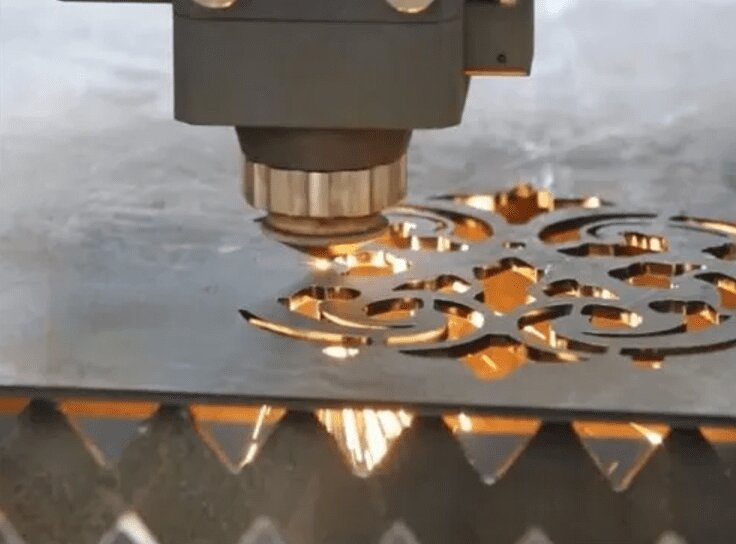
Laser Types and Their Application in Brass Cutting
Different types of lasers are used for cutting brass. Each laser type offers unique advantages depending on the project requirements. Below are the main types of lasers used in brass cutting.
CO2 Lasers
CO2 lasers are widely used for cutting brass. They work well for thicker materials and provide smooth edges. These lasers are versatile and cost-effective for many applications.
Fiber Lasers
Fiber lasers are known for their high efficiency and precision. They are ideal for cutting thin to medium-thickness brass. Fiber lasers are faster and consume less energy compared to CO2 lasers.
Green Lasers
Green lasers are specialized for high-reflectivity materials like brass. They offer excellent precision and are perfect for intricate designs. However, they are less common and more expensive.
What Are the Most Common Problems in Brass Laser Cutting?
Laser cutting brass can be tricky due to its unique properties. Here are the most common challenges and how to handle them.
Brass Is Highly Reflective
Brass is highly reflective. It can reflect a lot of the laser energy, making the cutting process less efficient and even damaging the laser equipment. To avoid this, special settings or coatings are often used to reduce the reflections and ensure the laser cuts effectively.
Brass Absorbs Very Little Laser Energy
Brass doesn’t absorb laser energy well, making it harder to cut. Adjusting the laser power or using gases like oxygen can improve energy absorption and make the process more effective.
Thermal Warping
Excessive heat can cause the brass to warp during cutting. When the material heats up, it can expand and contract unevenly, causing distortion. To prevent this, optimize the laser’s speed and power settings. Using multiple passes at lower power can also reduce heat buildup.
Handling Brass Oxidation During Cutting
Cutting brass with oxygen can cause oxidation, leading to discolored edges. This oxidation can affect the surface finish and even impact the accuracy of the cut. Using nitrogen as an assist gas can prevent oxidation and keep the edges clean.
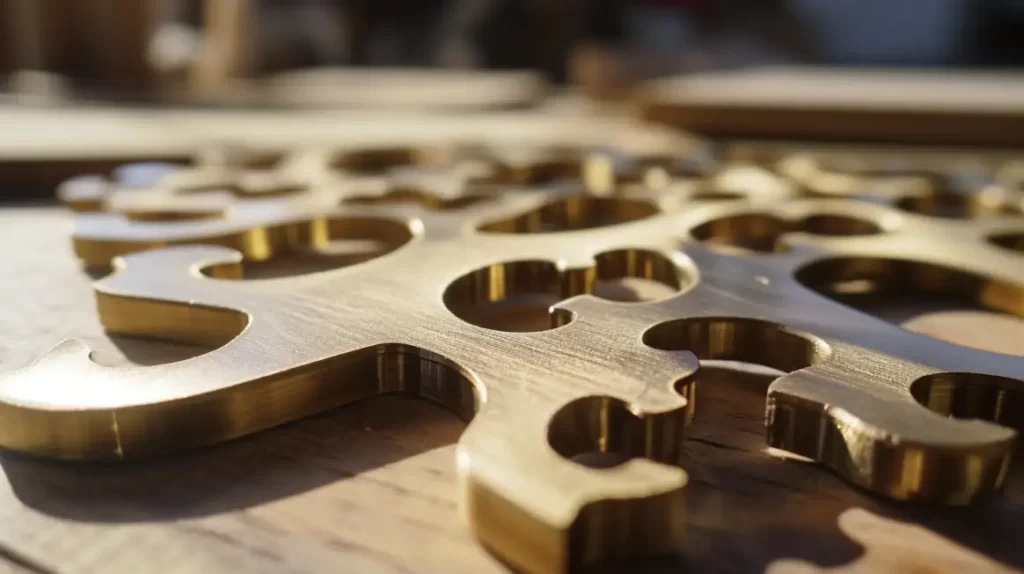
Key Advantages of Brass Laser Cutting
Brass laser cutting offers several benefits that make it a preferred method for many industries. Here are some key advantages of using laser cutting for brass.
Precision and Accuracy in Cutting
Laser cutting provides excellent precision and accuracy. The focused laser beam allows for tight tolerances, ensuring that the cuts are clean and exact. This accuracy ensures that every piece meets the same specifications.
Minimizing Material Waste
Laser cutting is highly efficient in terms of material usage. It produces minimal waste by using precise cuts. This efficiency reduces material costs and is better for the environment.
Quick Turnaround Times and Efficiency
Laser cutting is fast. The high-speed cutting process allows for quicker production times compared to traditional methods. This speed is ideal for meeting tight deadlines and increasing productivity.
Ability to Cut Intricate and Complex Designs
Laser cutting excels at creating detailed and complex designs. It can handle patterns and shapes that are difficult or impossible with other methods. This capability is perfect for industries needing high levels of detail.
What Are the Key Elements in Laser Cutting Brass?
Certain elements are crucial to achieving the best results in brass laser cutting. Let’s examine the key factors.
- Power Setting: Use a high power setting for effective cutting. For thin brass sheets (around 0.04 inches), a power of 1000 W is sufficient. For thicker materials, like 0.25-inch brass, you will need at least 4000 W. Higher power settings help melt the brass faster, reducing the time it remains in its most reflective state.
- Cutting Speed: It’s essential to set the cutting speed slightly lower than the maximum rate the machine can handle. Cutting at around 10-15% slower than the max speed helps maintain a steady, clean cut. If the cut speed is too fast, the laser may struggle to maintain the cut, forcing the material to be pierced again.
- Point of Focus: Keep the focus of the laser as close to the top surface of the brass as possible. This ensures that the laser energy is concentrated over a small area, resulting in a higher power density.
- High-Pressure Cutting Gas: Nitrogen is typically used for cutting brass. It helps to blow away the molten metal without reacting with the material. However, if cutting other reflective metals like copper, oxygen might be used.
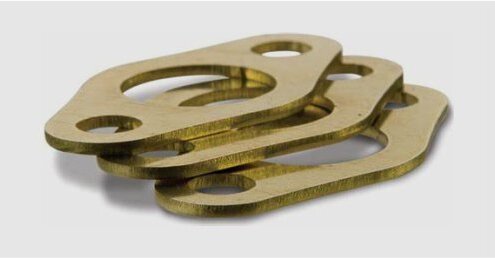
Does Employing Nitrogen To Cut Brass Work Well?
Yes, using nitrogen to cut brass works quite well. Nitrogen is commonly used in laser cutting for materials like brass because it provides several advantages during the cutting process.
Nitrogen is an inert gas, meaning it doesn’t react with the brass. When used as an assist gas, it blows away molten material without causing chemical changes. This keeps the cut edges clean and free from oxidation.
Additionally, nitrogen helps reduce the chances of thermal distortion. By maintaining a stable cutting environment, nitrogen ensures that the heat from the laser doesn’t affect the brass too much, reducing the risk of warping or uneven cuts.
Applications of Brass Laser Cutting
Brass laser cutting is versatile and used in many industries. Here are some common uses of brass laser cutting.
Electrical Components and Connectors
Brass is often used in electrical components because it conducts electricity well and is durable. Laser cutting helps create small, precise parts like circuit boards, connectors, and electrical contacts.
Automotive and Aerospace Industries
Brass is used for parts that need strength and resistance to corrosion in the automotive and aerospace industries. Laser cutting is used to make parts such as fittings, enclosures, and valve components.
Architectural and Decorative Uses
Brass laser cutting is popular in architecture and design. It creates decorative elements like railings, panels, and signs.
Jewelry and Fine Art Applications
Laser cutting is also used in jewelry making and fine art. It allows artists to create detailed patterns, engravings, and designs on brass.
Custom Fabrications and Prototyping
Laser cutting is commonly used for custom fabrications and prototyping. Brass is an excellent material for prototypes because it is easy to shape and cut.
Conclusion
Brass laser cutting offers a range of benefits, from high precision to the ability to create intricate designs. Whether it’s for electrical components, automotive parts, decorative elements, or custom prototypes, this technology provides the accuracy and efficiency needed to meet industry demands.
Looking for precise, high-quality brass laser cutting? Our advanced technology ensures clean, accurate cuts for your projects. Contact us today to discuss your brass cutting needs, and let’s turn your ideas into reality. Reach out now for a personalized quote!
HEY, I'M Kevin Lee

For the past 10 years, I’ve been immersed in various forms of sheet metal fabrication, sharing cool insights here from my experiences across diverse workshops.
Get in touch

Kevin Lee
I have over ten years of professional experience in sheet metal fabrication, specializing in laser cutting, bending, welding, and surface treatment techniques. As the Technical Director at Shengen, I am committed to solving complex manufacturing challenges and driving innovation and quality in each project.

